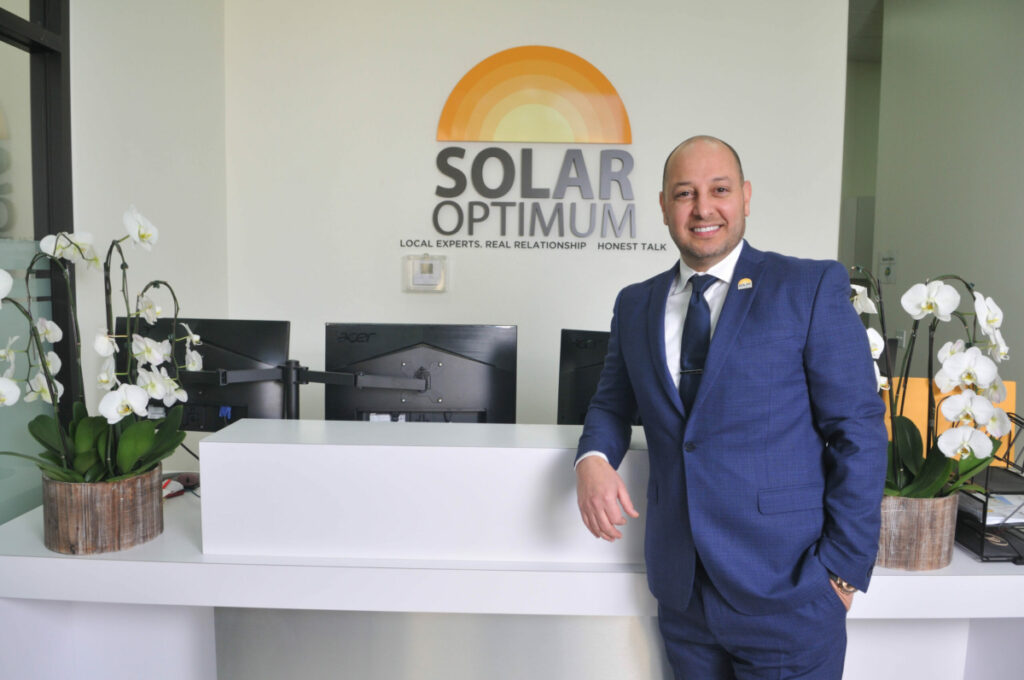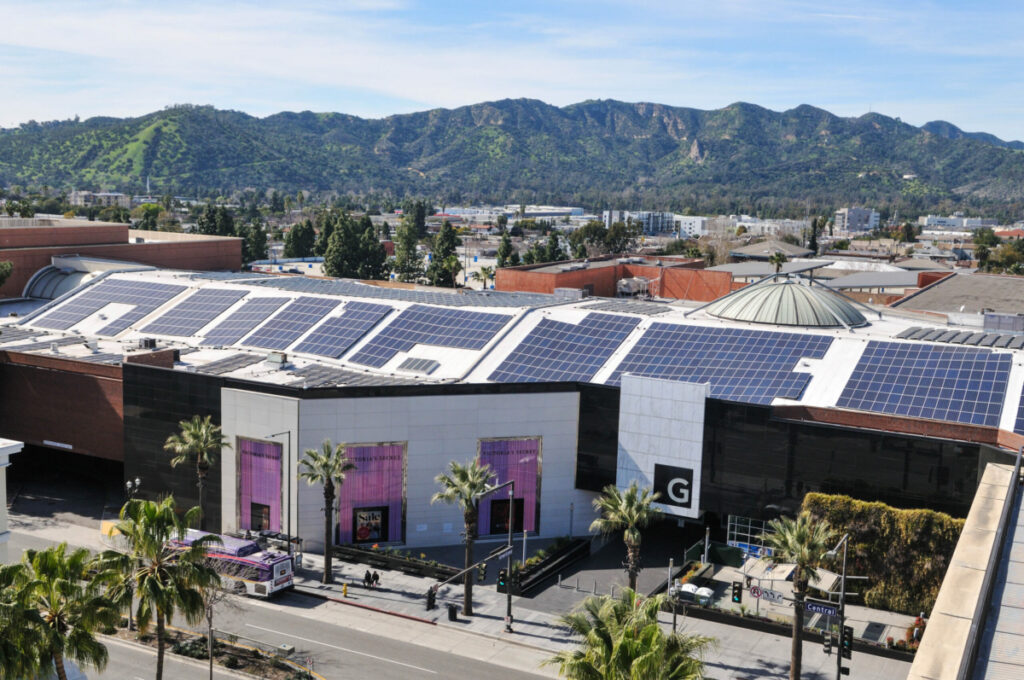This article has been revised and corrected from the original version.
Glendale-based Solar Optimum is expected to do $300 million in sales in 2023, and with more than 100 employees, it is one of the largest solar companies in Los Angeles.
It all started in 2006, when chief executive and founder Arno Aghamalian saw an opportunity to help people reduce their carbon footprint as then-Gov. Arnold Schwarzenegger launched the “Million Solar Roofs Initiative” to put solar panels on 1 million roofs across the state. Aghamalian wanted to be a part of the movement, and launched Solar Optimum in 2008.
Since then, the company has installed more than 300 megawatts of solar energy and has expanded to Arizona and Nevada. Its customers include the Glendale Galleria and other Southern California malls.

But the company’s success was not a given.
“It was very difficult to find good employees that had experience in this business because the business was so new,” Aghamalian said. “I had to learn and use those challenges I overcame to train the employees based on the knowledge that I gained.”
Another hurdle was the lack of product and strict permitting requirements, which weren’t as streamlined as they are today, he added.
After 15 years in the business, the company wants to help its customers become 100% energy independent.
The Business Journal spoke with Aghamalian about the industry and where he thinks it is heading.
How is your vision of helping customers become 100% energy independent affected by the new CPUC rules, or NEM 3.0?
NEM 3.0 will force us to adapt and provide different solutions for customers who believe in a green future. Previously, it made sense to buy and purely just make an investment play. Now, we’re going to have a shift to show our customers the value of achieving energy savings as utility prices continue to surge, and energy independence as the grid becomes less reliable.
Furthermore, with the recent passing of the Inflation Reduction Act, the demand for commercial solar will increase in spite of NEM as businesses are better positioned to capitalize on the tax efficiencies.

With the Inflation Reduction Act and other legislation, we’re expected to see increased manufacturing here in the United States. How do you think this could impact the industry and your business?
Putting American solar back in the driver’s seat to create our own green future is exciting to me. I think bringing back the raw-material manufacturing, because the IRA also speaks and supports that as well, with every component of solar, from the silicone to the wafers, is exciting to me because we’ve never had that here in the United States.
Can you talk about why storage is so important?
Solar energy and battery storage really is the future. Battery storage has grown tremendously in the last few years.
We had many national disasters throughout the states: in Texas with freezing pipelines; with hurricanes in Florida; with people not having any power. Because of batteries, people had peace of mind and the power to cook for their families. All of this is life-changing and game-changing for the entire renewable industry.
How are you working to meet the increased demand for batteries?
We’ve been doing batteries since 2014, and have become experts on them. For that reason, we can see a lot of the new products before they come to the market. The manufacturers are able to share with us and ask our opinion and do beta testing with us, among other things that other companies can’t do.
What other technological advancements in the solar industry are you excited about?
There are always more efficient products coming out, better chemistry in batteries and things like that, which, of course, make a difference in our industry.
I think the next thing I see more of is smart panels. Many manufacturers are really focused on that now, where you can control your entire house with your phone. Instead of going to a breaker box and setting up your breakers or even at the factory, you can do it on your phone.
The costs are a little high right now, but once it becomes mass-produced, those costs will decrease.
Your company started here in Los Angeles and you have expanded into Arizona and Nevada. Why did you
decide to expand into new markets?
If you can build it here (California), you can build it anywhere. We hear that a lot. It is not easy to build anything in California, but we were able to build an entire superstructure on top of a 10-story parking lot in the middle of downtown L.A., with the traffic and on a high-rise building tower. We have earned our stripes.
So if we have been able to do that here, why not offer those services in other states and help other people in different states to be able to enjoy the same benefits?
What are some of the main differences between running a solar company in California compared to Arizona and Nevada?
I don’t think there’s much of a difference. The rules and regulations are different. There are different processes to submit plans and permitting costs and things like that.
But from what we’re seeing, there’s less red tape in some of these states compared to California.
I wouldn’t say it’s more difficult. It’s just establishing your market and customer.
What are your goals for the future?
We want to be a household name. We want to expand across the United States. Become a household name for solar, batteries, storage, roofing, premium product, competitive pricing and unmatched warranty with a five-star experience. We want to be that company across the country.
